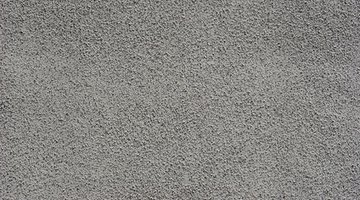How to Glue PVC Trim to Stucco
Polyvinyl chloride (PVC) trim, or molding, can be used to accent both interior and exterior walls. Despite the PVC material, the trim can be cut down and installed much like wood, using a few standard adhesives.

Installing PVC to stucco is slightly more complicated than installing the trim on other walls types, due to the uneven surface, but with the proper application of glue, the PVC trim holds to the stucco like any other material would.
-
Cut the PVC trim down to the proper size for the space in which you plan to install it. Measure the length of the space and then measure the same length on the PVC trim. Mark the length and cut the trim with a standard table or hand saw.
-
Hold the PVC trim up to the stucco wall where you want to install the trim. Mark the bottom edge of the PVC trim with a pencil to make sure you install the trim evenly when you glue it to the stucco.
-
Glue the PVC trim to the stucco with super glue, polyurethane glue, Gorilla glue or PVC cement. Cover the back of the trim with a thick layer of glue and press it to the wall in the location where you want to install it. Use the type of hardware recommended for the type of PVC trim you are installing. PVC trim can be installed with either screws or nails like a standard wood trim.
-
Squeeze glue onto the end of each piece of trim before installing the adjacent piece of trim. Press the adjacent piece of trim firmly against the end of the first piece. Make sure the entire space is filled with glue once the adjacent pieces of trim meet.
Things You Will Need
- Tape measure
- PVC trim
- Saw
- Super glue, polyurethane glue, Gorilla glue or PVC cement
Tip
If you do not glue PVC trim to a stucco wall, and do not glue the ends of the trim together, gaps may form behind or at the ends of the trim during changes in weather.
References
Writer Bio
Alexis Lawrence is a freelance writer, filmmaker and photographer with extensive experience in digital video, book publishing and graphic design. An avid traveler, Lawrence has visited at least 10 cities on each inhabitable continent. She has attended several universities and holds a Bachelor of Science in English.
Photo Credits
- stucco image by dbvirago from Fotolia.com
- stucco image by dbvirago from Fotolia.com
More Articles



